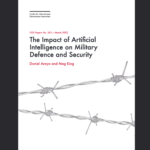Batch Exploration Attacks on Streamed Data Models

Table of Contents
Introduction
Another attacks on machine learning models we are exploring in this series are batch exploration attacks. Streamed data models, which are quintessential in real-time data processing across sectors like finance, health, and e-commerce, are prone to these sophisticated attacks. Batch exploration attacks typically involve attackers systematically probing machine learning models to unearth vulnerabilities or extract sensitive information, posing significant risks.
What are Streamed Data Models?
Streamed data models are specialized machine learning models designed to process and analyze data streams in real time, enabling instantaneous decision-making. These models are used in various domains, including finance for high-frequency trading, health for monitoring patient vitals, and e-commerce for personalized user experiences. Unlike traditional models that work on static datasets, streamed data models operate on dynamic data, analyzing and learning from information as it flows, allowing them to adapt swiftly to changes and deliver immediate insights. The ubiquity of these models in diverse applications highlights their importance and the need for securing them effectively against potential cyber threats.
What is Batch Exploration Attack?
Batch exploration attacks are a class of cyber attacks where adversaries systematically query or probe streamed machine learning models to expose vulnerabilities, glean sensitive information, or decipher the underlying structure and parameters of the models. The motivation behind such attacks often stems from a desire to exploit vulnerabilities in streamed data models for unauthorized access, information extraction, or model manipulation, given the wealth of real-time and dynamic data these models process. The ramifications of successful attacks can be severe, ranging from loss of sensitive and proprietary information and erosion of user trust to substantial financial repercussions.
How Batch Exploration Attacks are Executed?
Batch exploration attacks are executed in phases. Initially, attackers probe the model with a series of inputs to understand its behaviors and infer its structure, properties, and, potentially, the training data. The responses from the model during this exploratory phase are analyzed to glean insights into its functionality and to locate vulnerabilities or sensitive information. Once these vulnerabilities are identified, attackers exploit them to compromise the model or extract valuable information.
Tools and Techniques
Attackers deploy an array of tools and sophisticated techniques to perform batch exploration attacks. These can include automated scripts to send a sequence of queries to the model and analyze its responses, machine learning frameworks to recreate or approximate the target model (a process known as model inversion), and optimization algorithms to fine-tune the attack strategy based on the model’s reactions to initial probes.
Example: To illustrate, consider a scenario involving a streamed data model used by a financial institution for fraud detection. An attacker, intending to bypass the fraud detection mechanism initiates a batch exploration attack by sending a series of transactions with varying attributes to observe the model’s reactions. By analyzing the responses, the attacker identifies patterns or thresholds that trigger the fraud alert. Armed with this knowledge, the attacker can now engineer transactions that fall just below the identified thresholds to carry out fraudulent activities without raising alarms. This example underscores the risks posed by batch exploration attacks and how they can be exploited to circumvent critical systems.
Impact and Mitigation
Effects of Attacks
In the first instance, could be unauthorized access and extraction of sensitive data, leading to a loss of intellectual property and private information. This immediate compromise can escalate to severe long-term ramifications, including legal repercussions, financial losses, and irreversible damage to an organization’s reputation. For individuals, it could lead to identity theft, privacy invasion, and personal financial loss. Additionally, a compromised model can produce incorrect outputs or make flawed decisions, causing a cascading effect of detrimental consequences in real-world applications, such as misdiagnoses in healthcare or flawed financial predictions.
Mitigation Strategies
To counter and mitigate the substantial risks posed by batch exploration attacks, we need to employ a diverse set of strategies. Continuous monitoring of model interactions is crucial to early detection of any anomalous activities, coupled with the enforcement of robust authentication and access controls to bar unauthorized access. It’s critical to instate meticulous input validation mechanisms to thwart attackers from manipulating the models through nefarious inputs. Further security is achievable through model hardening techniques like model distillation and ensemble learning, which bolster the model’s defense against reverse engineering and assorted attacks. Encryption stands as a cardinal component, ensuring the security of data both in transit and at rest, while anomaly detection systems remain indispensable, enabling the prompt identification and alerting of any unusual access or query patterns, thus ensuring a holistic approach to securing machine learning models against batch exploration attacks.
Preventive Measures
Beyond mitigation, organizations need to be proactive in preventing batch exploration attacks. Adopting a security-centric development approach, performing regular vulnerability assessments, and training models with adversarial examples can enhance model resilience. Educating development and security teams about the potential risks and attack vectors associated with streamed data models can help in designing models with security in mind from the outset. Furthermore, incorporating ethical guidelines and legal frameworks into the development and deployment of machine learning models can also play a crucial role in safeguarding privacy and security.
Recent Research on Batch Exploration Attacks
Recent advancements in research have cast light on the multifaceted nature of batch exploration attacks on streamed data models, offering profound insights into innovative methodologies and enhanced security mechanisms. For instance, the work in [1] meticulously delineates the vulnerability spectrum of streamed data models, spotlighting attacker-exploitable pathways and the urgent necessity for robust defensive frameworks. In [2], the authors extrapolate the potency of blockchain and anomaly detection techniques in fortifying models against breaches. A detailed examination in [3] unveils the intricacies of model hardening strategies such as model distillation and ensemble learning, revealing their pivotal role in bolstering resilience against sophisticated attacks. A study in [4] articulates the indispensable nature of rigorous input validation in thwarting exploitation through malicious inputs, enhancing overall model security. A study in [5] underscores the essential role of regular auditing and real-time monitoring in pinpointing anomalies and potential threats in model interactions, advocating for continuous vigilance. An in-depth investigation in [6] emphasizes the criticality of stringent authentication and access controls in obstructing unauthorized access and preserving information integrity. These collective scholarly endeavors significantly augment the understanding and knowledge base related to the impacts, mechanisms, and counteractive strategies pertinent to batch exploration attacks, paving the way for the inception of resilient and secure streamed data models.
Conclusion
The escalating sophistication of batch exploration attacks is a call to action to secure streamed data models, which are used in real-time data processing across diverse sectors. These attacks put the confidentiality, integrity, and availability of sensitive information at risk. Recent scholarly explorations have illuminated various innovative methodologies and defensive mechanisms to mitigate these attacks, ranging from advanced encryption to rigorous input validation and model hardening strategies.
References
- Das, R., & Morris, T. H. (2017, December). Machine learning and cyber security. In 2017 international conference on computer, electrical & communication engineering (ICCECE)(pp. 1-7). IEEE.
- Tukur, Y. M., Thakker, D., & Awan, I. U. (2021). Edge‐based blockchain enabled anomaly detection for insider attack prevention in Internet of Things. Transactions on Emerging Telecommunications Technologies, 32(6), e4158.
- Wang, X., Li, J., Kuang, X., Tan, Y. A., & Li, J. (2019). The security of machine learning in an adversarial setting: A survey. Journal of Parallel and Distributed Computing, 130, 12-23.
- Khalaf, O. I., Sokiyna, M., Alotaibi, Y., Alsufyani, A., & Alghamdi, S. (2021). Web Attack Detection Using the Input Validation Method: DPDA Theory. Computers, Materials & Continua, 68(3).
- Böse, B., Avasarala, B., Tirthapura, S., Chung, Y. Y., & Steiner, D. (2017). Detecting insider threats using radish: A system for real-time anomaly detection in heterogeneous data streams. IEEE Systems Journal, 11(2), 471-482.
- Zhang, Y., Kasahara, S., Shen, Y., Jiang, X., & Wan, J. (2018). Smart contract-based access control for the internet of things. IEEE Internet of Things Journal, 6(2), 1594-1605.
For 30+ years, I've been committed to protecting people, businesses, and the environment from the physical harm caused by cyber-kinetic threats, blending cybersecurity strategies and resilience and safety measures. Lately, my worries have grown due to the rapid, complex advancements in Artificial Intelligence (AI). Having observed AI's progression for two decades and penned a book on its future, I see it as a unique and escalating threat, especially when applied to military systems, disinformation, or integrated into critical infrastructure like 5G networks or smart grids. More about me, and about Defence.AI.

Luka Ivezic
Luka Ivezic is the Lead Cybersecurity Consultant for Europe at the Information Security Forum (ISF), a leading global, independent, and not-for-profit organisation dedicated to cybersecurity and risk management. Before joining ISF, Luka served as a cybersecurity consultant and manager at PwC and Deloitte. His journey in the field began as an independent researcher focused on cyber and geopolitical implications of emerging technologies such as AI, IoT, 5G. He co-authored with Marin the book "The Future of Leadership in the Age of AI". Luka holds a Master's degree from King's College London's Department of War Studies, where he specialized in the disinformation risks posed by AI.
































































